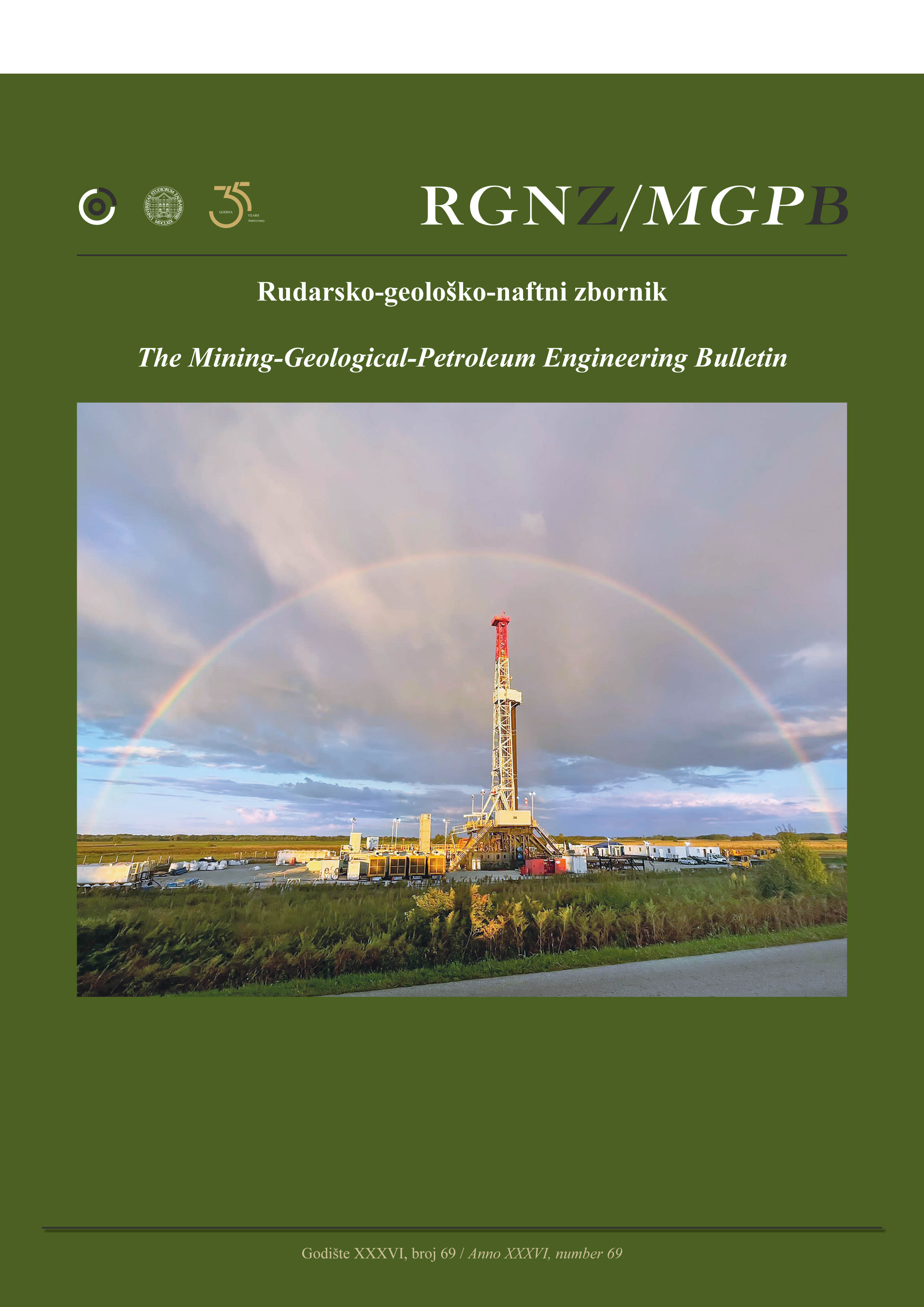Identification of AVO Attribute Response to the Presence of CO2 Content Using AVO Modelling Method in Lower Talang Akar Formation (LTAF), South Sumatra Basin
DOI:
https://doi.org/10.17794/rgn.2024.3.8Keywords:
Lower Talang Akar Formation, CO2 Content, AVO Attribute Analysis, AVO Modelling, Intercept, GradientAbstract
The research area is an oil and gas field that is currently undergoing development, located in the South Sumatra Basin. Coal content, particularly within the Lower Talang Akar Formation (LTAF) interval, is frequently encountered in this field, with coal serving as the source of in-situ CO2 content formation. Consequently, CO2 content can be identified using the Amplitude Versus Offset (AVO) analysis method, allowing an assessment of its influence on the percentage presence of CO2. The data used in this study consist of well data, including log data (Density, Porosity, Vp & Vs Sonic/DT), Drill Stem Test (DST) data, well marker data resulting from stratigraphic sequence interpretation, and well reports. The AVO method to be employed encompasses a wide-angle range, approximately 0°-45°. The results obtained from this research using the AVO method, after AVO modelling on well data, indicate that the dominant AVO response within the LTAF interval is class 4 AVO. AVO analysis results regarding AVO presence indicate that reservoir intervals containing CO2 content will exhibit a class 4 AVO response, and an increase in fluid content percentage will result in a more positive intercept and a more negative gradient (towards class 2 AVO). In terms of facies and depth variations, the AVO attribute response consistently demonstrates an increase in intercept and a decrease in gradient with rising CO2 levels.
Downloads
Published
How to Cite
Issue
Section
License
Copyright (c) 2024 Muhammad Reza Perdana, Muhammad Noor Alamsyah, Sigit Sukmono, Andri Hendriyana

This work is licensed under a Creative Commons Attribution 4.0 International License.
Creative Commons-BY
Authors who publish with this journal agree to the following terms:
In agreeing this form, you certify that:
- You read the ethical codex of the RGN zbornik available at journal web.
- You submitted work is your original work, and has not previously been published and does not include any form of plagiarism.
- You own copyright in the submitted work, and are therefore permitted to assign the licence to publish to RGN zbornik.
- Your submitted work contains no violation of any existing copyright or other third party right or any material of an obscene, libellous or otherwise unlawful nature.
- You have obtained permission for and acknowledged the source of any illustrations, diagrams or other material included in the work of which you are not the copyright owner.
- You have taken due care to ensure the accuracy of the work, and that, to the best of your knowledge, there are no false statements made within it.
- All co-authors of this submitted work are aware of, and in agreement with, the terms of this licence and that the submitted manuscript has been approved by these authors.
Publication licence
You retain copyright in your submitted work, according to journal license policy (CC-BY). By signing this form you agree that RGN zbornik may publish it under the publication licence. In summary the licence allows the following:
Anyone is free:
- To copy, distribute, display, and perform the work.
- To make derivative works.
Under the following conditions:
- The original author must always be given credit.
- The work may not be used for commercial purposes.
- If the work is altered, transformed, or built upon, the resulting work may only be distributed under a licence identical to this one.
Exceptions to the licence
In addition to publishing the work printed under the above licence, RGN zbornik will also enable the work to be visible online.
The journal editorial can change the licence rules anytime but it cannot retroactively restrict author(s) rights.


